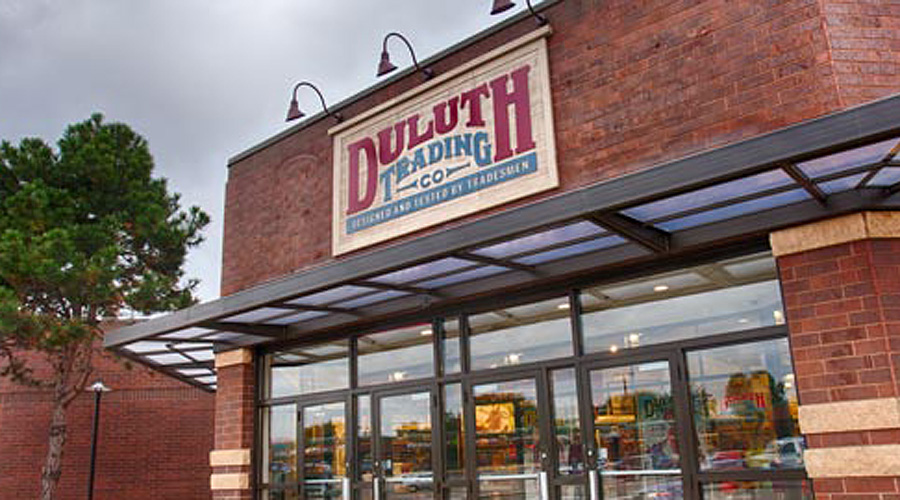By Eric Smith
Duluth Holdings Inc., parent of Duluth Trading Co., is moving into a “true omnichannel environment with strong conviction,” according to CEO Stephanie Pugliese, who outlined the apparel and accessories company’s progress on this pursuit in Tuesday’s earnings call with analysts.
“We are taking advantage of a competitive position that is not burdened with legacy issues like rationalizing store count or rightsizing the wholesale channel,” she said on the call. “We will continue to invest in building an omnichannel model that will enhance the experience of our valuable customer base and attract new customers to the Duluth trading brand. We have a very clear vision of how we will accomplish this goal.”
The vision is centered in improving the customer experience, an elusive goal for many companies, but one that Duluth is pursuing with vigor. One critical element is a new e-commerce platform, which Duluth will start testing internally with employees in a few weeks and launch for customers in mid-July.
“Our new website will provide a better mobile, tablet and desktop experience, more flexible content management and increased ability to personalize the experience,” Pugliese said. “We are excited to present our customers with a state-of-the-art e-commerce platform, but we do anticipate a short period of disruption as they navigate through the new site.
This disruption will indeed be felt, said Jim Duffy of Stifel, who wrote in a note to clients: “The transition is expected to cause deceleration in direct growth for the four to six weeks following the launch (likely the beginning of 3Q18).”
E-commerce is only one leg of the stool for Duluth. The company’s vision also includes an emphasis on brick and mortar, with plans to open 15 stores in fiscal 2018. Q1 saw the company open two retail stores, in Anchorage, AK, and West Fargo, ND, totaling approximately 40,000 square feet.
The store in Anchorage and another new one in Greensboro, NC, have more gross square footage than Duluth’s average new store, which Pugliese said will provide “additional space for direct consumer order fulfillment.”
“We continue to see that the presence of a store in a market allows us to increase our market share immediately through retail, and then with outsized direct sales growth once the store is established in that market,” she said. “The stores are the ultimate expression of the Duluth trading brand and they continue to prove out their importance in raising brand awareness and attracting new customers and in increasing our penetration of valuable multi-channel buyers who annually spend twice as much as single channel buyers.
A third component of Duluth’s growth plan centers on recruitment, always a challenge in retail, especially now, with such a low unemployment rate nationally. “Attracting and retaining high caliber talent” will help “future-proof” the company, Pugliese said.
Specifically, she said, the company is “expanding our leadership development programs to ensure succession in key functions and upward mobility within our organization. Our shareholders approved our employees stock purchase plan at the recent annual meeting, which provides an attractive benefit to our employees and a way to create a greater sense of ownership in the future of our company. We all know that these investments will have near-term impact on profitability.”
This balanced mix of investing in e-commerce and brick and mortar has Duluth heading down the right path, according to analyst Michael M.Y. Kawamoto of D.A. Davidson Co., who wrote in a note to clients: “While the retail build-out will continue to weigh on near-term margins, we continue to like the company’s long-term omnichannel potential.”
The results from the first quarter bear that out. Duluth reported first-quarter net income that beat analysts’ estimates, while revenue fell short, though did improve in the high teens. The company posted a net loss of $0.7 million, or 2 cents per diluted share, compared to net income of $0.4 million, or 1 cent per diluted share, in the prior year-first quarter. Analysts expected a loss of 5 cents per share.
Net sales increased 19.7 percent to $100.2 million, compared to $83.7 million in the same period a year ago. The net sales increase was driven by a 3.8 percent growth in direct net sales and a 70.7 percent growth in retail net sales, with growth in virtually all product categories and in both men’s and women’s business. The increase in retail net sales was primarily due to having 13 more stores during the first quarter of 2018 as compared to the same period a year ago.
This was the 33rd consecutive quarter of increased net sales year-over-year for Duluth; however, gross margin decreased 230 basis points to 55.8 percent compared to 58.1 percent in the prior-year first quarter. And the company reported an operating loss of $0.3 million, compared to operating income of $0.7 million in the prior-year first quarter, as well as adjusted EBITDA of $2.6 million compared to $2.7 million in the prior-year first quarter
The company reiterated a previously issued fiscal 2018 outlook—which is provided on a 53-week period, compared to a 52-week period in fiscal 2017— calling for net sales in the range of $555 million to $575 million and earnings per share in the range of 79 cents to 84 cents per diluted share, with an effective tax rate of 26 percent.
“Direct growth in established markets continues to double that of the company as a whole, and the Duluth brand is resonating well with consumers,” Kawamoto also wrote in his client note. “Near-term earnings growth will be tempered by retail expansion and technology investments, but we continue to see a clear path to earnings growth acceleration in 2019 and beyond.”
Stifel’s Duffy also noted the potential pitfalls of investing heavily in brick and mortar while also investing in technology. “We remain concerned that retail expansion is an expensive means of customer acquisition,” he wrote. “Associated capex and inventory are increasing the capital demands of the business, increasing the dependence on Q4 for annual earnings power and weighing on returns. We will be watching inventory management closely to assess liquidity headroom. If year-over-year inventory growth remains ahead of revenue growth, additional borrowing capacity may be necessary for 2019.”
Photos courtesy Duluth Trading
[author] [author_image timthumb=’on’]https://s.gravatar.com/avatar/dec6c8d990a5a173d9ae43e334e44145?s=80[/author_image] [author_info]Eric Smith is Senior Business Editor at SGB Media. Reach him at eric@sgbonline.com or 303-578-7008. Follow on Twitter or connect on LinkedIn.[/author_info] [/author]

















